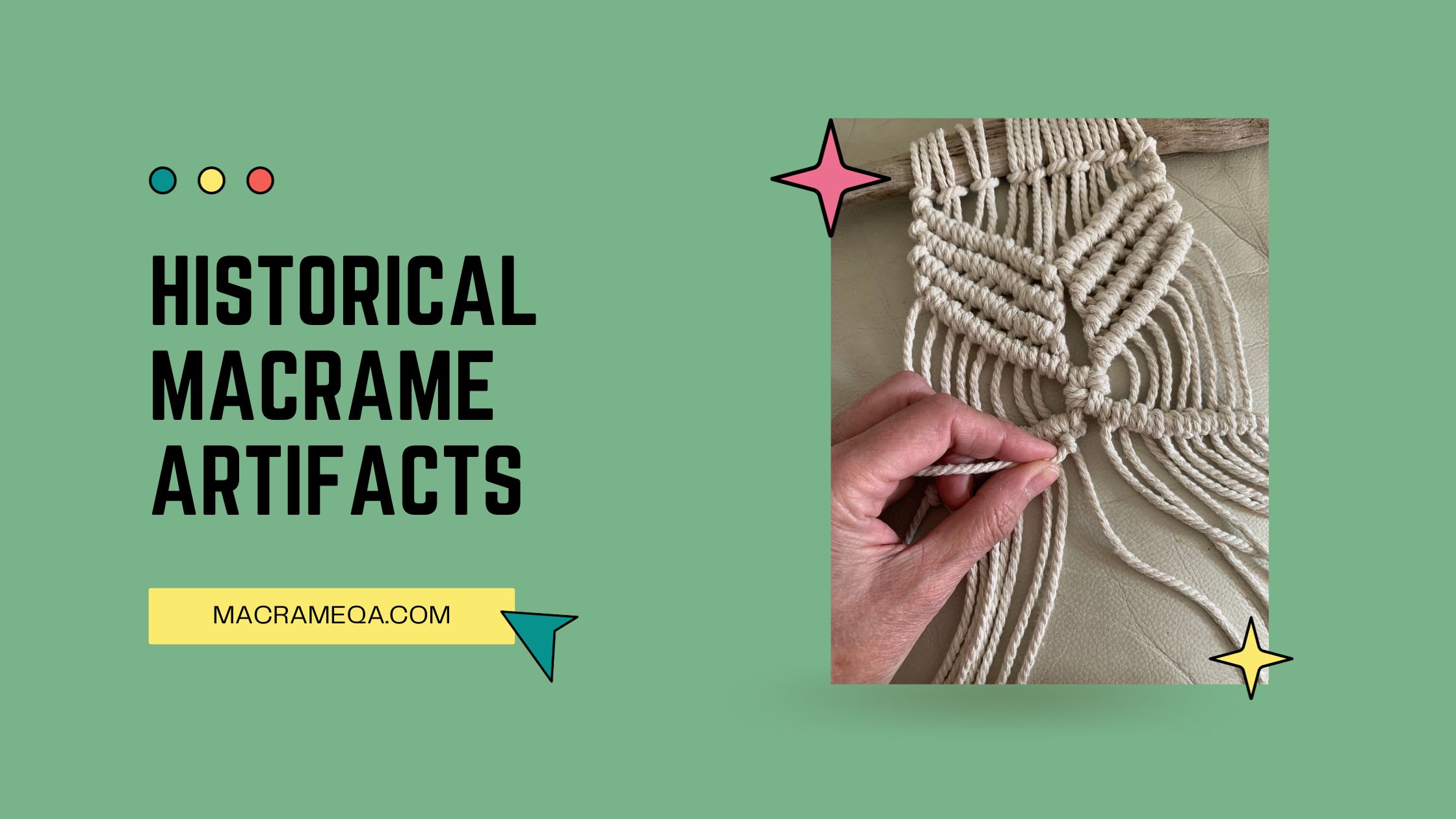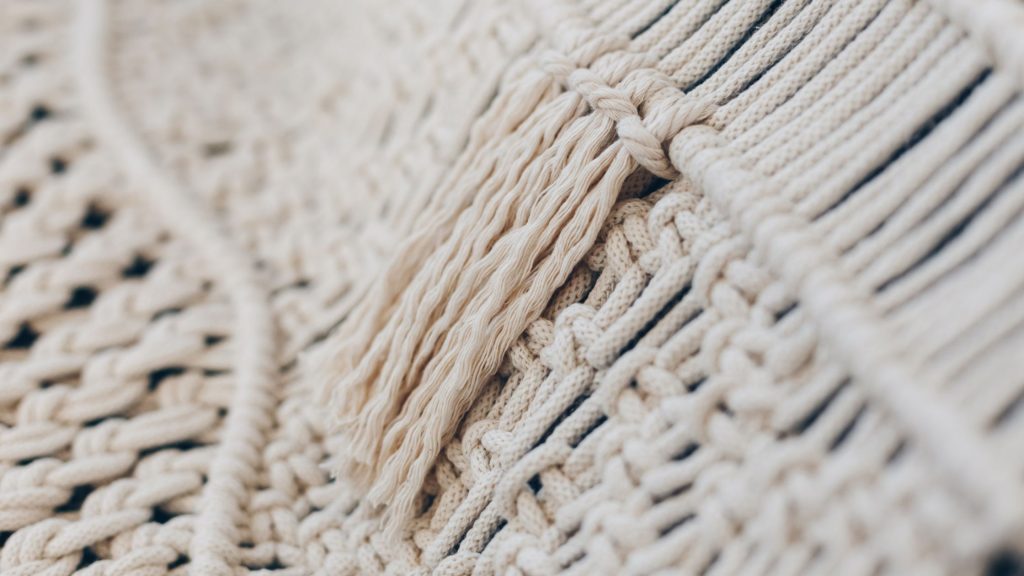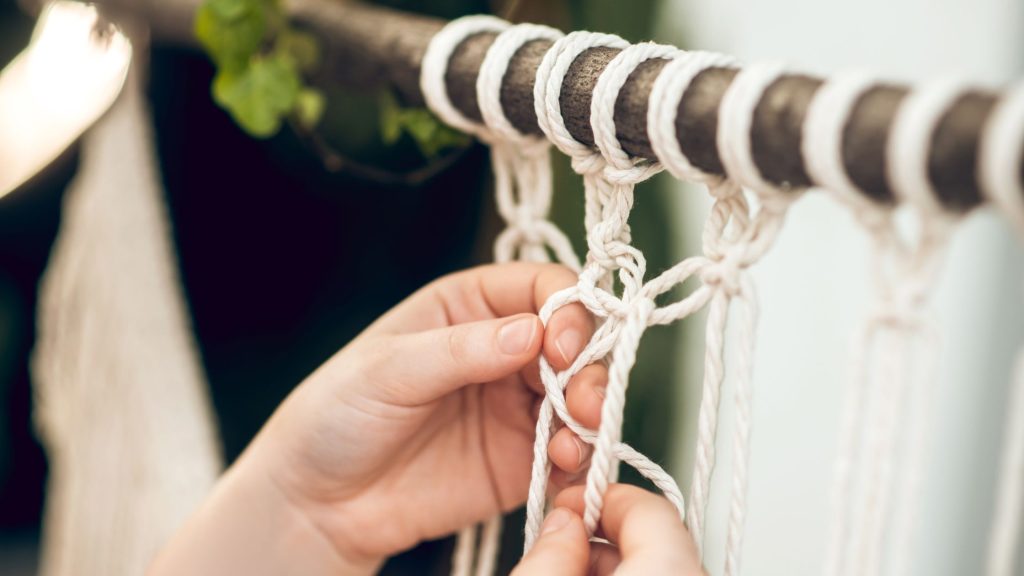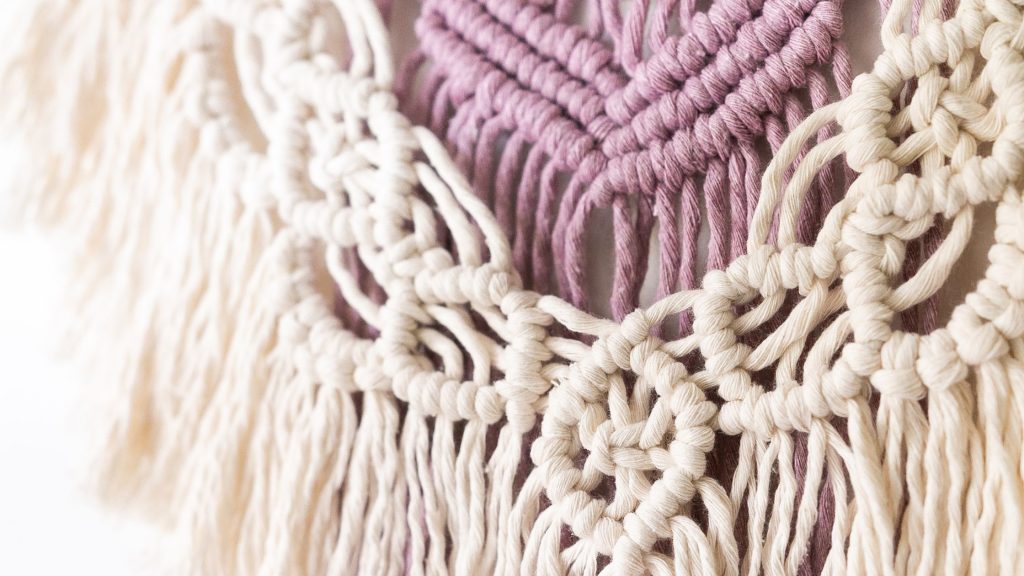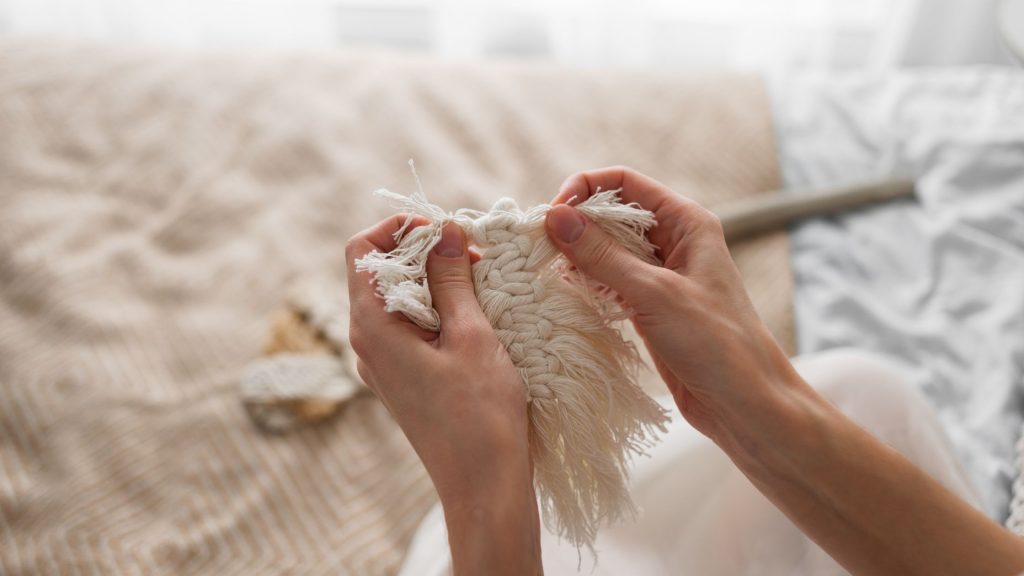Macrame, a fascinating art form that dates back centuries, has produced several extraordinary artifacts that hold great historical value. From unique wall hangings to intricate jewelry pieces, these creations showcase the meticulous craftsmanship and cultural significance behind macrame. The world is full of captivating macrame artifacts, each carrying a story from the past and offering a glimpse into the rich history of this ancient craft. In this article, we will explore some of the most noteworthy macrame artifacts that have left an indelible mark on the world of art and design. So, join us on this journey as we unravel the secrets and beauty of these significant historical pieces.
Ancient Origins of Macrame
Prehistoric Macrame
Macrame, the art of knotting string or cord to create decorative patterns, has a long and fascinating history dating back to prehistoric times. The exact origins of macrame are difficult to trace due to the perishable nature of its materials. However, evidence suggests that early humans used knots to fasten and secure objects, indicating the rudimentary form of macrame.
Macrame in Ancient Egypt
One of the earliest documented instances of macrame can be found in ancient Egypt. The Egyptians, known for their advanced craftsmanship, used macrame techniques to create intricate decorations for clothing, as well as for household items. Macrame art adorned the robes of pharaohs and was even used to create elaborate headpieces and belts.
Macrame in Ancient China
Ancient China also played a significant role in the development of macrame. The Chinese utilized knotting techniques in various aspects of their culture, from creating decorative knot patterns for clothing to making intricate nets for fishing. Macrame in China was not only functional but also had symbolic meanings in both religious and social contexts.
Macrame in the Middle Ages
Macrame in Medieval Europe
During the Middle Ages, macrame gained popularity in Europe as an art form and practical craft. In the monasteries and convents of medieval Europe, macrame was employed by monks and nuns to create intricate religious textiles, such as altar cloths and vestments. These macrame pieces often featured religious symbols and intricate knot patterns, showcasing the skill and creativity of the craftsmen.
Macrame in the Arab World
Simultaneously, the Arab world embraced macrame as well, incorporating it into their textile traditions. Macrame techniques were utilized in the creation of garments, accessories, and home décor items. Arab traders played a crucial role in spreading the art of macrame across continents, introducing it to new cultures, and influencing its evolution.
Renaissance Revival of Macrame
Macrame in Renaissance Europe
The Renaissance period marked a revival of interest in macrame, particularly in Europe. Wealthy aristocrats and royalty patronized the art form, commissioning extravagant macrame pieces for their homes and garments. Macrame curtains, tapestries, and bed hangings became sought-after symbols of wealth and sophistication.
Influential Renaissance Macrame Artists
Notable macrame artists emerged during the Renaissance, leaving a lasting impact on the art form. Among them was Isabella Catanea Parasole, an Italian noblewoman who excelled in macrame and taught the craft to other noblewomen. Her intricate macrame lace designs gained recognition throughout Europe and influenced the development of lace-making techniques.
Macrame in the New World
Macrame in Indigenous Cultures of the Americas
Indigenous cultures in the Americas have a rich history of macrame, with each tribe developing its unique style and symbolism. The Native Americans, for instance, utilized macrame techniques to create intricate jewelry, garments, and ceremonial objects. These artifacts often featured intricate beadwork and feather accents, reflecting the spiritual and cultural significance embedded in macrame.
Macrame in Colonial America
With the arrival of European colonizers, macrame techniques merged with the textile traditions of colonial America. These techniques were adapted and combined with local materials, creating a distinctive American macrame style. Macrame was utilized to create practical items such as bags and hammocks, as well as decorative elements in homes and clothing.
Macrame in the 19th Century
Victorian Era Macrame
The 19th century witnessed a resurgence of macrame’s popularity, particularly during the Victorian era. Macrame was extensively used in home décor, with elaborate macrame curtains and valances adorning the homes of the wealthy. The intricate patterns and delicate craftsmanship of Victorian macrame reflected the romantic aesthetic of the time.
Macrame in Trades and Hobbies
Macrame also found its way into various trades and hobbies during this period. Sailors, for instance, used macrame techniques to create sturdy and decorative knots for their ropes and riggings. Macrame patterns and instructions were widely published, allowing individuals to learn and practice the craft as a hobby, further popularizing macrame in the 19th century.
Macrame in the 20th Century
Arts and Crafts Movement Influence
The 20th century saw macrame become part of the larger Arts and Crafts movement, which aimed to revive traditional craftsmanship. Macrame artists and enthusiasts embraced the movement’s emphasis on handmade and visually appealing objects. Macrame was incorporated into various art forms, including sculptures, wall hangings, and jewelry, with artists experimenting with different materials and knotting techniques.
Macrame in Modernist Design
Macrame also made its mark in the world of modernist design. Designers such as Marcel Breuer and Ludwig Mies van der Rohe incorporated macrame elements into their furniture designs, adding a unique tactile and visual dimension. Macrame’s versatility allowed it to seamlessly blend with the clean lines and minimalist aesthetics of modernist architecture and design.
Macrame in the Modern Era
Macrame in Contemporary Art
In the modern era, macrame has expanded its artistic horizons, with contemporary artists pushing the boundaries of the craft. Artists like Ruth Asawa and Sheila Hicks have utilized macrame techniques to create intricate sculptures and large-scale installations, challenging traditional notions of what macrame can be. These artists have elevated macrame from a decorative craft to a legitimate form of contemporary art.
Macrame in Interior Design
Macrame has experienced a resurgence in popularity in interior design, finding its place in modern homes. Macrame wall hangings, plant hangers, and curtains have become stylish additions to contemporary spaces, adding texture and visual interest. With a wide variety of macrame patterns, colors, and materials available, individuals can easily incorporate macrame into their interior design to create a unique and inviting atmosphere.
Noteworthy Macrame Artifacts and Artists
The Assyrian Headpiece
The Assyrians, an ancient civilization in Mesopotamia, created a remarkable macrame headpiece adorned with beads, feathers, and intricate knot patterns. This artifact showcases the early use of macrame in decorative headdresses.
The Book of Kells Macrame Borders
The Book of Kells, an illuminated manuscript from the Middle Ages, features exquisite macrame borders. These intricate knot patterns add a decorative element to the pages, highlighting the importance of macrame in medieval European craftsmanship.
The Chinese Macrame Belt of Emperor Qianlong
Emperor Qianlong, a ruler during the Qing Dynasty, possessed a macrame belt made by skilled Chinese artisans. The belt, intricately knotted with silk threads, exhibited the high level of craftsmanship and artistic mastery of macrame in ancient China.
The Hanging Gardens of Babylon Macrame Panels
While the Hanging Gardens of Babylon no longer exist, historical accounts mention the use of macrame panels in the gardens’ design. These macrame panels adorned the gardens, adding a touch of elegance and natural beauty to the breathtaking architectural wonder.
The Victorian Macrame Vest of Queen Victoria
Queen Victoria, known for her passion for fashion, possessed a stunning macrame vest during the Victorian era. Lavishly adorned with intricate knot patterns and decorative beading, the vest exemplified the opulence of macrame during the time.
The Macrame Curtains by Josef Hoffmann
Josef Hoffmann, an influential figure in the early 20th-century design movement, created macrame curtains that embodied the principles of the Wiener Werkstätte. These curtains showcased Hoffmann’s innovative approach to macrame, blending traditional techniques with modernist aesthetics.
The Macrame Sculptures of Ruth Asawa
Ruth Asawa, an American artist of Japanese descent, revolutionized the perception of macrame through her intricate wire sculptures. Using macrame techniques, Asawa created stunning three-dimensional artworks that blurred the boundaries between craft and fine art.
The Macrame Wall Hangings of Sheila Hicks
Sheila Hicks, an American textile artist, gained international recognition for her macrame wall hangings. Hicks explored the potential of macrame to create large-scale installations, combining different materials and colors to create dynamic and visually captivating artworks.
The Macrame Installations of Leonardo Drew
Leonardo Drew, a contemporary artist, incorporated macrame into his installations, adding layers of texture and depth. By combining macrame with found objects and other materials, Drew pushes the boundaries of conventional macrame and explores new dimensions of artistic expression.
The Macrame Fashion Designs of Missoni
Missoni, an Italian fashion house known for its vibrant and colorful designs, incorporated macrame elements into its fashion collections. The brand’s macrame garments and accessories have become iconic, showcasing the versatility and unique aesthetic possibilities of macrame in the realm of fashion.
Conclusion
In conclusion, macrame has a rich and diverse history spanning thousands of years and across various cultures. From its humble beginnings in prehistoric times to its modern interpretations in contemporary art and design, macrame continues to captivate and inspire. The remarkable artifacts and artists throughout history serve as a testament to the enduring legacy and creative potential of this intricate craft. Whether used for decoration, symbolism, or self-expression, macrame remains an art form that embodies the beauty of knotting and the human desire for artistic expression.

